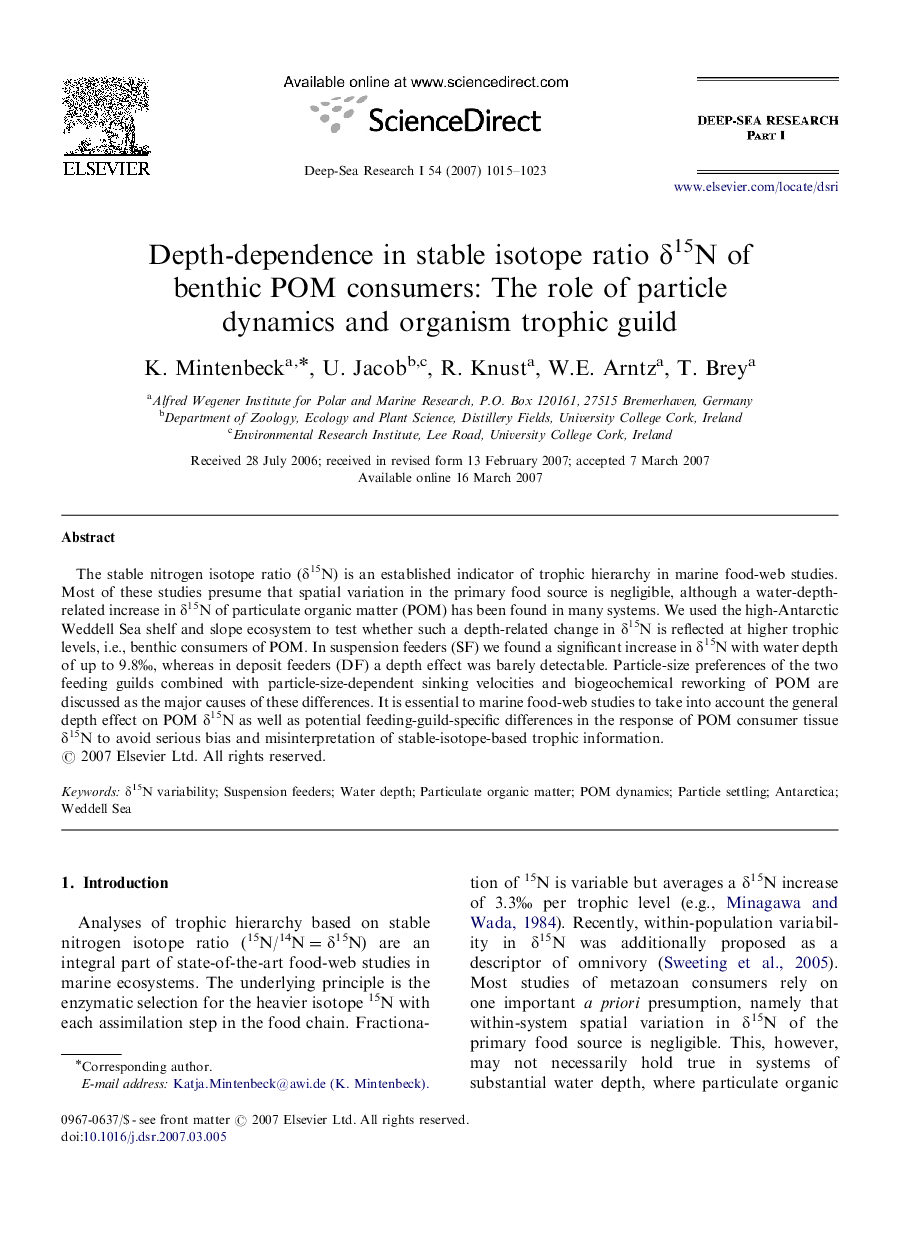| Article ID | Journal | Published Year | Pages | File Type |
|---|---|---|---|---|
| 4535698 | Deep Sea Research Part I: Oceanographic Research Papers | 2007 | 9 Pages |
The stable nitrogen isotope ratio (δ15N) is an established indicator of trophic hierarchy in marine food-web studies. Most of these studies presume that spatial variation in the primary food source is negligible, although a water-depth-related increase in δ15N of particulate organic matter (POM) has been found in many systems. We used the high-Antarctic Weddell Sea shelf and slope ecosystem to test whether such a depth-related change in δ15N is reflected at higher trophic levels, i.e., benthic consumers of POM. In suspension feeders (SF) we found a significant increase in δ15N with water depth of up to 9.8‰, whereas in deposit feeders (DF) a depth effect was barely detectable. Particle-size preferences of the two feeding guilds combined with particle-size-dependent sinking velocities and biogeochemical reworking of POM are discussed as the major causes of these differences. It is essential to marine food-web studies to take into account the general depth effect on POM δ15N as well as potential feeding-guild-specific differences in the response of POM consumer tissue δ15N to avoid serious bias and misinterpretation of stable-isotope-based trophic information.
